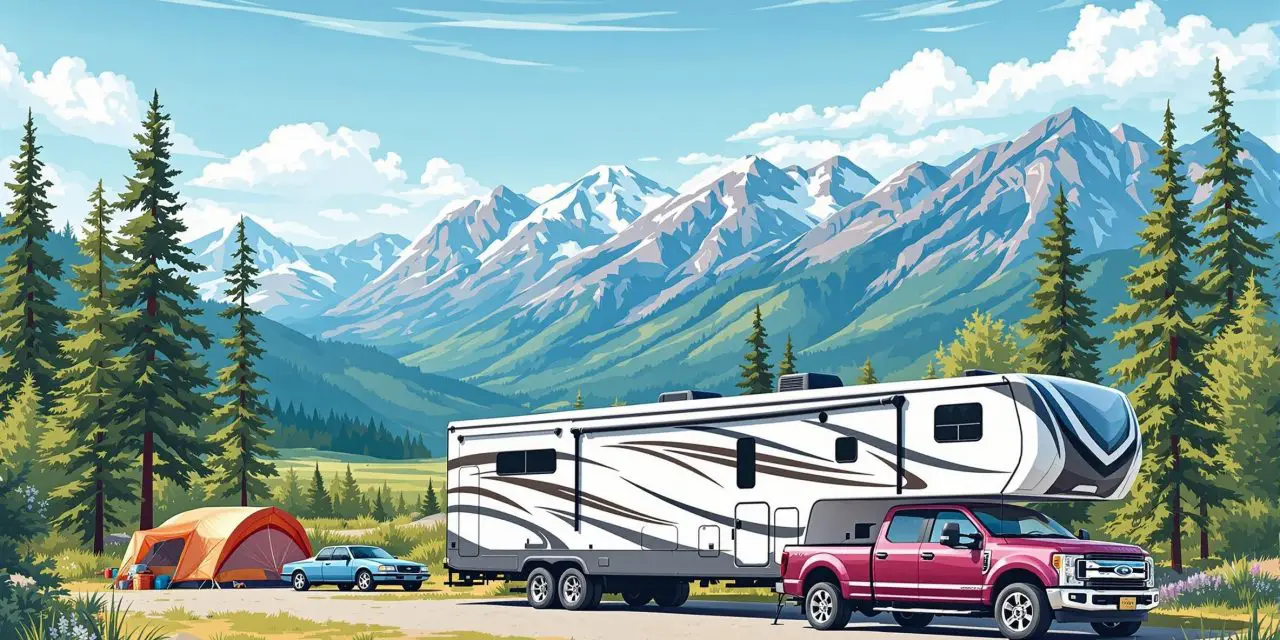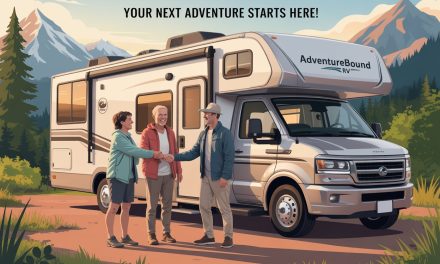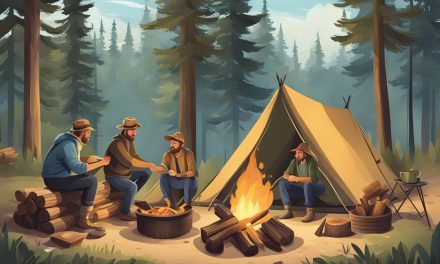Would you like to save this article?
Are you dreaming of hitting the open road in a massive fifth wheel, convinced it’s your ticket to RV paradise? Hold up there, future road warrior! Before you sign on that dotted line, you need to hear some hard truths that most RV dealers conveniently forget to mention. The reality of fifth wheel living isn’t all Instagram-worthy sunsets and campfire stories—it’s a mixed bag of incredible highs and soul-crushing lows that’ll either make you fall head-over-heels in love or run screaming back to your stick-and-brick house.
In this eye-opening deep dive, we’re pulling back the curtain on what the RV Odd Couple discovered after years of full-time fifth wheel living. These aren’t your typical “pros and cons” lists you’ll find on manufacturer websites—these are the raw, unfiltered realities that come from actually living the dream (and nightmare) day after day. Whether you’re a weekend warrior considering the jump to something bigger or a full-timer weighing your options, you’re about to get the insider scoop that could save you from making a very expensive mistake.
Buckle up, because we’re about to shatter some myths and reveal what really happens when you choose the fifth wheel life. Trust me, after reading this, you’ll never look at those shiny RVs on the lot the same way again.
The Big Truck Love Affair (And Its Expensive Reality)
Let’s start with what many consider the crown jewel of fifth wheel ownership: that massive, powerful truck you’ll need to haul your home-on-wheels. There’s something undeniably American about commanding a dual-wheeled beast down the highway, and for many RVers, this is half the appeal.
The statistics back up this truck obsession. According to industry data, over 94,000 fifth wheels are shipped annually, and every single one requires a heavy-duty truck to move it. RV industry reports show that the average RV owner spends between $80,000 to $150,000 on their truck-and-trailer combination.
But here’s where the romance meets reality: These trucks aren’t just expensive to buy—they’re expensive to own. We’re talking about $100,000+ investments that depreciate faster than your morning coffee cools down. The used market? It’s like playing darts blindfolded. You’ll spend months hunting across the country for the right truck, and when you find it, you’d better be ready to move fast.
The gender divide reality: Here’s something dealers definitely won’t mention upfront—many spouses (often women) find these trucks intimidating to drive. The RV Odd Couple admits Mercedes won’t even drive their truck empty, let alone with a 40-foot fifth wheel attached. This means all the driving pressure falls on one person, eliminating the ability to share long-distance driving duties that couples enjoy with smaller RVs.
Let’s be honest here—if you’re scared to parallel park a Honda Civic, you probably shouldn’t be wrestling with a dually in a Walmart parking lot. The learning curve is steep, and the consequences of mistakes are expensive.
The Space Obsession: When Bigger Isn’t Always Better
Walk into any fifth wheel and you’ll immediately understand why families choose them. The space is genuinely impressive—we’re talking about 17 feet of counter space, massive refrigerators, and living areas that actually feel like home. Industry statistics show that fifth wheels provide more living space per foot than motorhomes of similar length.
The RV Odd Couple’s 2020 Forest River Sandpiper 38FK showcases this beautifully. Their kitchen doubles as an office space, and they’ve hosted thousands of visitors who’ve never seen anything like it. When you’re talking about full-time living, especially with children, this space becomes crucial.
But here’s the trade-off nobody talks about: You sacrifice exterior storage for interior space. While you’re living like kings inside, your outdoor gear, tools, and seasonal items are crammed into limited basement storage. This becomes a real problem when you need to access something buried in the back of a compartment.
The configuration options are endless—over 100 different floor plans exist for fifth wheels. You can have bedrooms upstairs, kitchens downstairs, toy hauler backs, or residential-style layouts. But with great choice comes great confusion, and many buyers suffer from analysis paralysis.
The family factor: Statistics show that 38% of RV owners are millennials, many with young families. For these demographics, fifth wheels often become the only viable option for extended travel. The RV Odd Couple couldn’t have traveled cross-country with their child and dog in anything smaller.
Sure, your living room might be bigger than your old apartment, but good luck finding a place to store your fishing gear, camping chairs, and that inflatable kayak you swore you’d use more often.
The Stair Master Challenge: When Your Home Becomes a Gym
Here’s a reality check that’ll hit you harder than your morning coffee: fifth wheels are essentially multi-story homes on wheels. You’ll be climbing stairs constantly—to get in, to access the bedroom, to reach the main living area. For some, this isn’t a big deal. For others, it’s a daily struggle that only gets worse with age.
The RV Odd Couple’s experience is telling. Their 80-pound dog, Skippy, can no longer handle the stairs, requiring them to carry him up and down. When you’re dealing with aging pets or your own mobility issues, these stairs transform from a minor inconvenience into a major obstacle.
The aging factor: Industry data shows that the average RV owner is between 38-55 years old, but many continue RVing well into their 60s and 70s. What seems manageable at 45 can become dangerous at 65. The physical demands of hitching, unhitching, and navigating stairs don’t decrease with age.
Consider this: You’re not just climbing stairs occasionally—you’re doing it dozens of times per day. Forgot something upstairs? Stairs. Need to use the bathroom? Stairs. Want to grab a snack? More stairs. For anyone with knee problems, back issues, or other mobility concerns, this becomes a significant quality-of-life issue.
If you’re already groaning when you have to walk up a flight of stairs at home, imagine doing it 50 times a day while trying to enjoy your “relaxing” retirement.
The Spontaneity Killer: When Adventure Becomes Scheduled
Here’s where the fifth wheel dream crashes into the harsh reality of physics. When you’re pulling a 42-foot trailer with a truck, creating a combined length of nearly 65 feet, spontaneity dies a painful death. That charming roadside diner you want to try? Better hope they have truck-friendly parking. That “quick” detour to see the world’s largest ball of yarn? Not happening unless you’ve researched ingress and egress routes.
The RV Odd Couple learned this lesson the hard way. Their travels require military-level planning—every fuel stop, every overnight location, every route must be pre-planned and verified. You can’t just “wing it” when you’re commanding a vehicle longer than most city buses.
The planning reality: Full-time RVers report spending 2-3 hours planning for every day of travel. You’re not just looking for places to stay—you’re researching bridge heights, weight limits, turning radii, and escape routes. Miss one detail, and you could find yourself stuck for hours while someone blocks your exit.
Gas stations become strategic missions. You need truck stops with specific configurations, not just any old gas station. Run out of fuel in the wrong location, and you’re looking at expensive emergency services and potentially dangerous situations.
Remember that carefree road trip where you’d see a sign for “Historic Downtown” and just pull off? Yeah, those days are over. Now you’re the person with printed maps, backup routes, and a stress level that would make air traffic controllers nervous.
The Solo Driver Dilemma: When Partnership Becomes Pressure
Here’s a relationship reality that RV dealers definitely don’t discuss during sales presentations: the driving responsibilities in fifth wheel relationships are rarely shared equally. The statistics are staggering—in most fifth wheel couples, only one person does the driving, and it’s usually the male partner.
This creates enormous pressure on that designated driver. We’re talking about 8-12 hour driving days with zero relief, navigating a vehicle that most people aren’t qualified to operate. The mental fatigue is crushing, and the physical demands are significant.
The RV Odd Couple’s experience illustrates this perfectly. John handles all the driving while Mercedes navigates—a setup that works but creates an imbalanced workload. When you’re the sole driver, every mechanical issue, every tight spot, every challenging weather condition becomes your personal responsibility.
The skill gap reality: Industry experts estimate that 50% of fifth wheel owners lack proper driving skills for their vehicles. These aren’t just cars with trailers—they’re complex machines requiring specific techniques for backing, turning, and highway driving.
The attachment and detachment process becomes another solo responsibility. Climbing under the trailer, aligning the kingpin, managing electrical connections—it’s physically demanding work that becomes more challenging with age.
So much for that retirement dream of leisurely sharing driving duties with your spouse. Instead, you’re white-knuckling it through mountain passes while your partner takes scenic photos.
The Truth About Fifth Wheel Living: Is It Worth It?
After dissecting these five brutal realities, you might be wondering if fifth wheel living is worth the hassle. The answer depends entirely on your priorities, physical capabilities, and lifestyle preferences.
When fifth wheels make sense: If you’re a family needing maximum space, planning to stay parked for extended periods, and have someone physically capable of handling the driving and setup demands, fifth wheels can be incredible. The space and comfort are genuinely impressive, and for full-time living, they’re often the only viable option for larger families.
When you should look elsewhere: If you value spontaneity, want shared driving responsibilities, have mobility concerns, or prefer simpler travel logistics, consider Class B or C motorhomes, or smaller travel trailers.
The RV Odd Couple’s controversial conclusion rings true: Fifth wheels are the best option for full-time families, but they’re overkill for couples or solo travelers. For weekend warriors or retirees wanting simple adventures, the complexity and demands of fifth wheel ownership often outweigh the benefits.
The bottom line: Industry statistics show that approximately 1 million Americans live in RVs full-time, with varying levels of satisfaction. The key is matching your RV choice to your actual needs, not your wishful thinking.
Don’t let shiny showroom models and polished marketing materials fool you. Fifth wheel living is a serious commitment that requires honest self-assessment of your capabilities, needs, and priorities. Make sure you’re choosing the lifestyle for the right reasons, not just because everyone else is doing it.
The perfect RV doesn’t exist, but the right RV for your situation does. Make sure you’re buying the reality, not the dream.
Sources
- RV Odd Couple YouTube Channel
- RV Industry Statistics – Condor Ferries
- Full-Timing in a 5th Wheel vs. Motorhome – Transwest
- Full-Time RV Living Questions – Cinder’s Travels
- Fifth Wheel Pros and Cons – Price Right RV
- RV Living Expenses – Steve and Noelle





